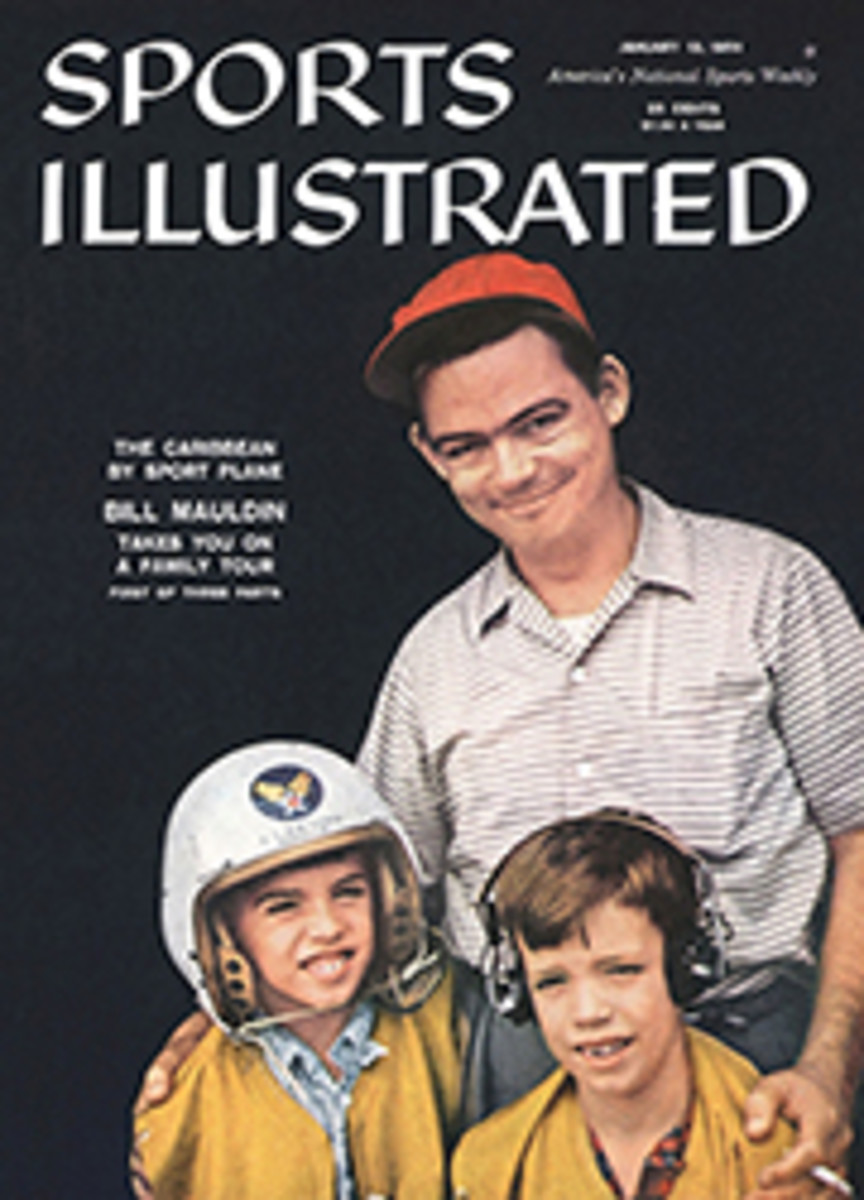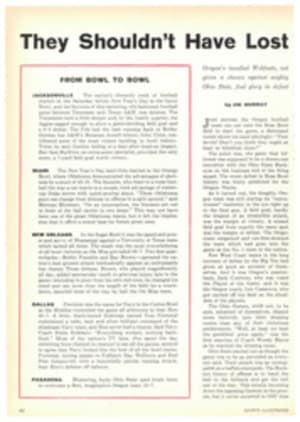
The Odyssey of Victor Seixas
Just previous to the recent Davis Cup matches, in which he once again performed so valiantly in his familiar role of a hero of a lost cause, Vic Seixas announced that he had had his fill of spending November and December in Australia and that the 1957 expedition would be his last one overseas to play in the Davis Cup challenge round. Over the years Vic has made almost as many final farewell tours as Sarah Bernhardt, but now he is approaching 35, which is old even for a man of Seixas' indestructible physique, and chances are he probably means what he says. If he does, it will mark the close of a truly remarkable career.
Seixas has appeared in 20 Davis Cup challenge-round matches, doubles and singles, more than anyone since the days of Tilden. By every reasonable law of athletics, he should have had no international career at all. If a tennis player is going to develop into a star, he invariably gives definite indications of this when he is in his early 20s. By 27 he is on the way down. Seixas began when he was 27. Up to that time he was sort of a cross between a regional lion and a national lamb. He was never ranked better than seventh nationally—just another fairly good player going no place in particular. The big change actually began to take place early in 1950 when Vic, who had never competed in Europe, took himself over for the French Championships and the run of English tourneys which culminate with Wimbledon. All of a sudden his game started to take on new power and new dimensions. This may have simply come from the discovery he made in matches against supposedly superior players that his game was better than he had appreciated. In the French Championships, for example, when he and Budge Patty opposed Eric Sturgess and Jaroslav Drobny in the semifinals of the doubles, Seixas was expected to be the least effective man on the court. He was the strongest.
Seixas then embarked on his brilliant if jagged career. During his low periods he was extremely beatable, even by second-class players. But he enjoyed periods of wonderful form and, at one time or another, won everything there is to be won in tennis: Wimbledon in 1953, our National Singles in 1954, our National Doubles in 1952 and 1954, endless mixed doubles championships with Doris Hart and, most important of all, he teamed with Tony Trabert in 1954 to win back the Davis Cup from Australia. This was the year Vic set up the victory by defeating Rosewall in four sets. It was quite an achievement. In their six previous encounters Rosewall had won six straight times, controlling the play by taking more advantage of Vic's major weakness, his ground strokes, than Vic could take of Rosewall's major weakness, his forehand. This time, however, almost by sheer force of purpose, Seixas was able to persist with Captain Talbert's pre-match plan for him to pound Rosewall's forehand and keep pounding it regardless of what else took place, and the tremendous pressure of that attack did break down Rosewall's forehand, and that won the Davis Cup.
Rosewall was mechanically a better player than Seixas. So were many other players he defeated. He did it, in the last analysis, on fight. Sometimes he fought so hard he became the victim of his own intense over-emotion and defeated himself, as he did in the 1956 Wimbledon semifinals against Rosewall. Many times more often, though, even when he was off form, he pulled out big matches by persevering long after most men would have given in and then, quite miraculously, forcing his way out of the slough of despond with a sustained streak of brilliant volleying. To beat a top man, Seixas had to get to the forecourt. There he was as good as anyone. His recurring problem was how to get there, since his service was an in-and-out affair and his ground strokes (scooped forehand, sliced backhand) were seldom strong enough to allow him to follow in behind them. By employing a wide variety of spins on his service and his backcourt strokes, he sought to take the edge and pace off his opponent's ground-stroke production. When this didn't work, he had no alternative but to break that cardinal rule of tennis tactics and try to get up to net behind his obviously unforcing shots. So amazing were his court coverage and his reflexes as a volleyer that on occasions he could "live" at midcourt and forecourt when, really, you wouldn't have thought he had a ghost of a chance.
These fighting, gambling tactics and his vital court personality made nearly every match Seixas appeared in dramatic and rousing and exhausting. You played it with him. In short, he poured so much spirit into his tennis that, even though he was not a player experts would classify as truly first rank, he approximated the stature and color of a great player. Aside from his ground strokes, Vic Seixas' chief weakness has been his love of the game, and this may yet prove his undoing. If he is needed next December, he may not be able to resist making still another final farewell tour.
PHOTO
SEIXAS HAS TERRIFIC FLAIR FOR NET PLAY

